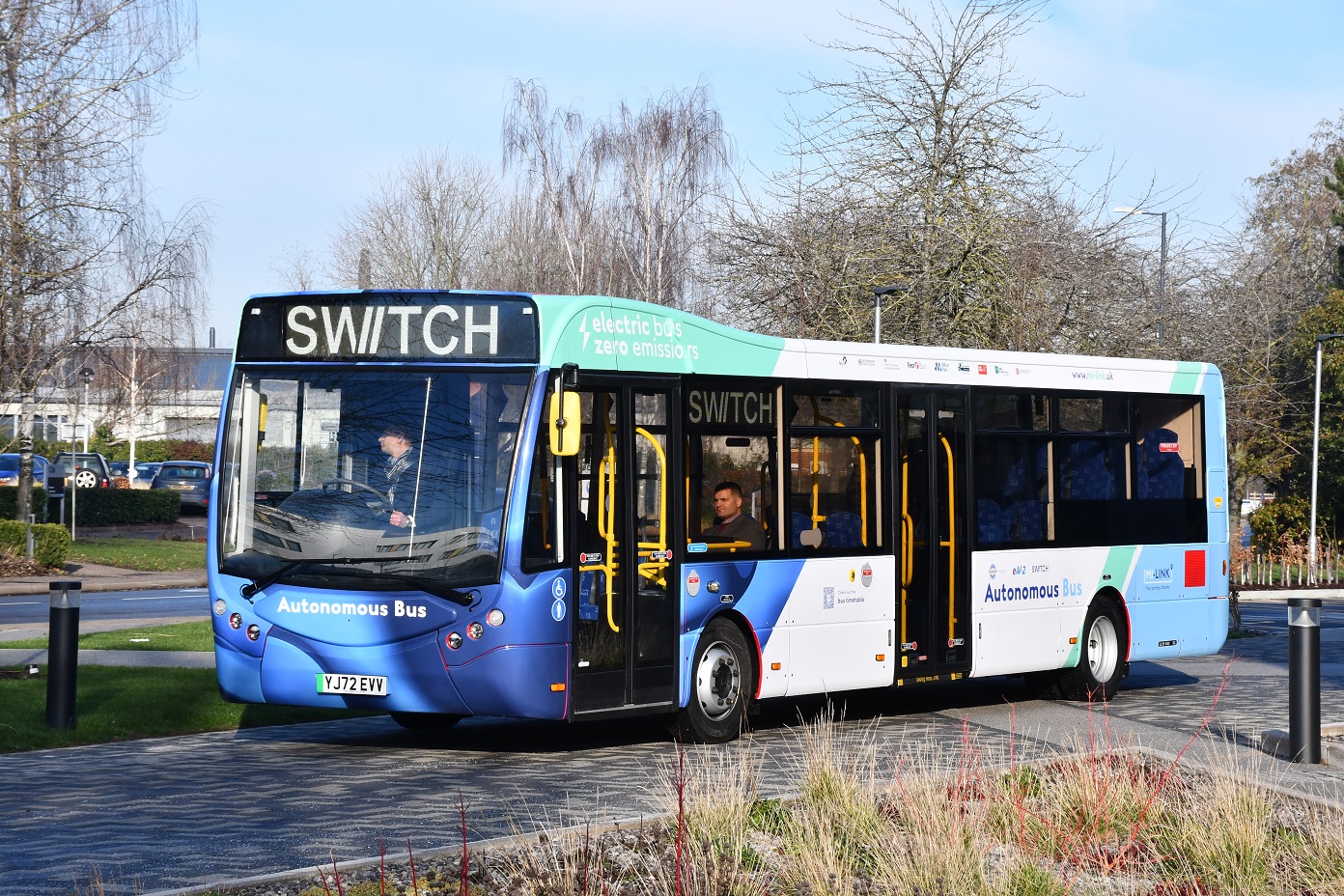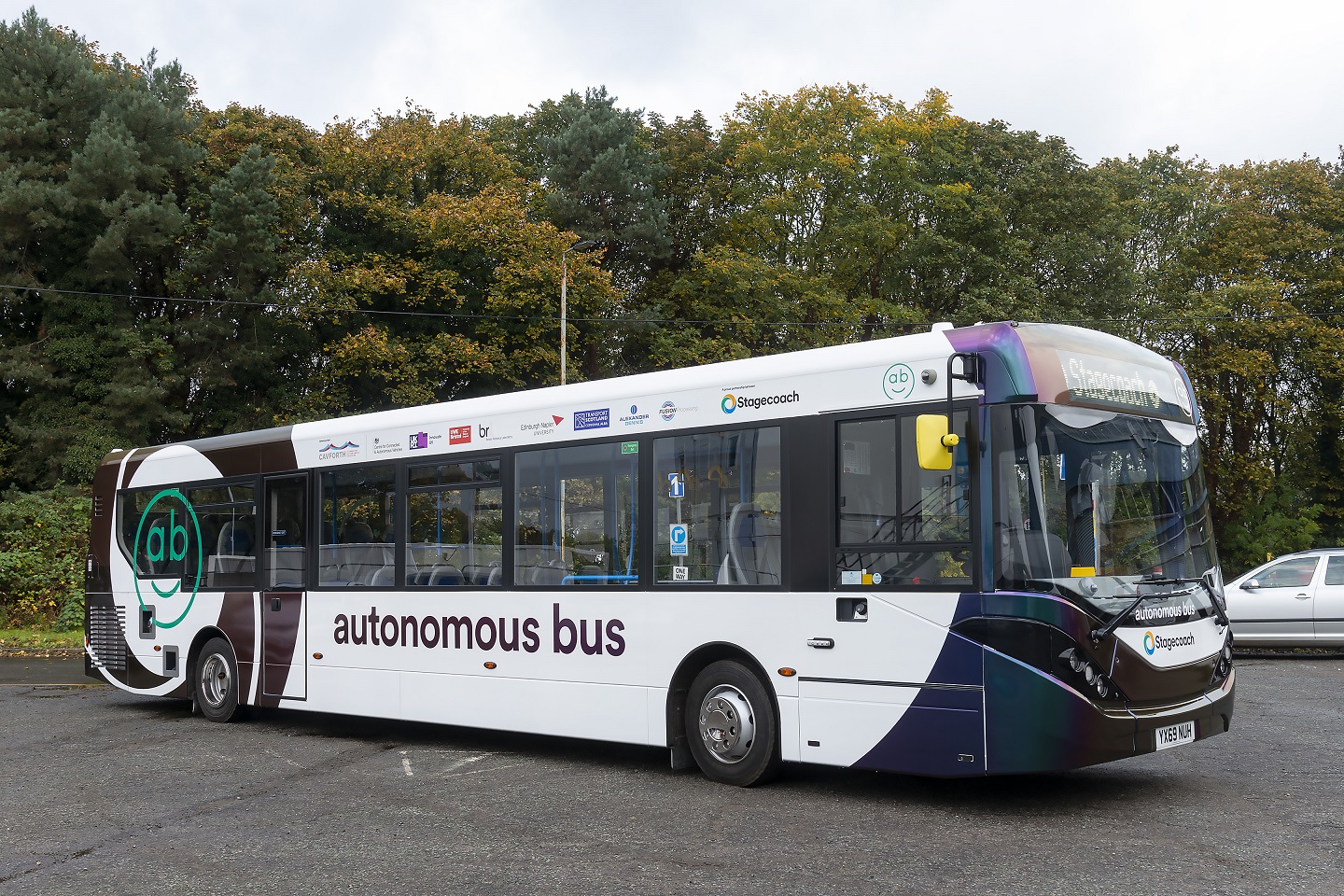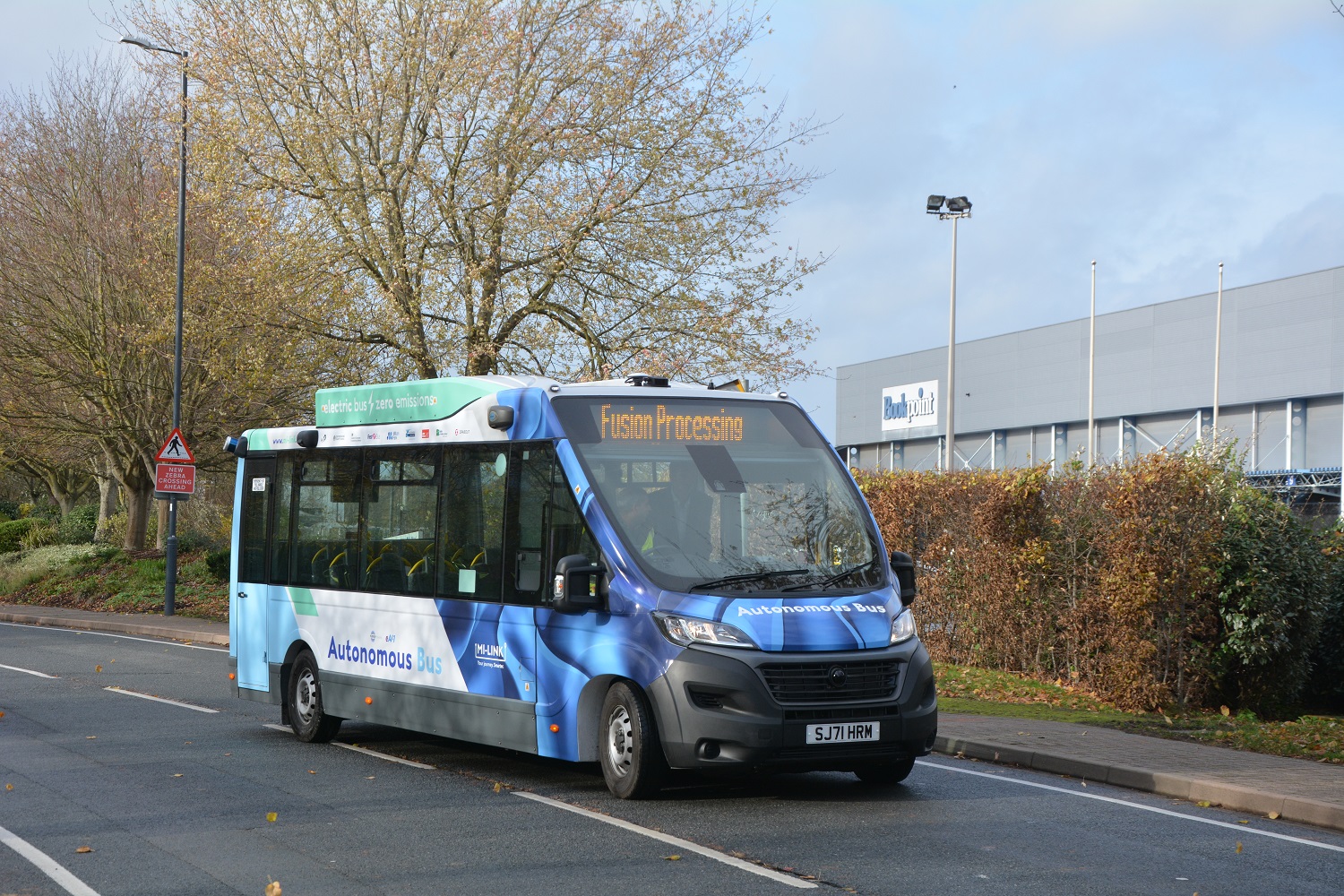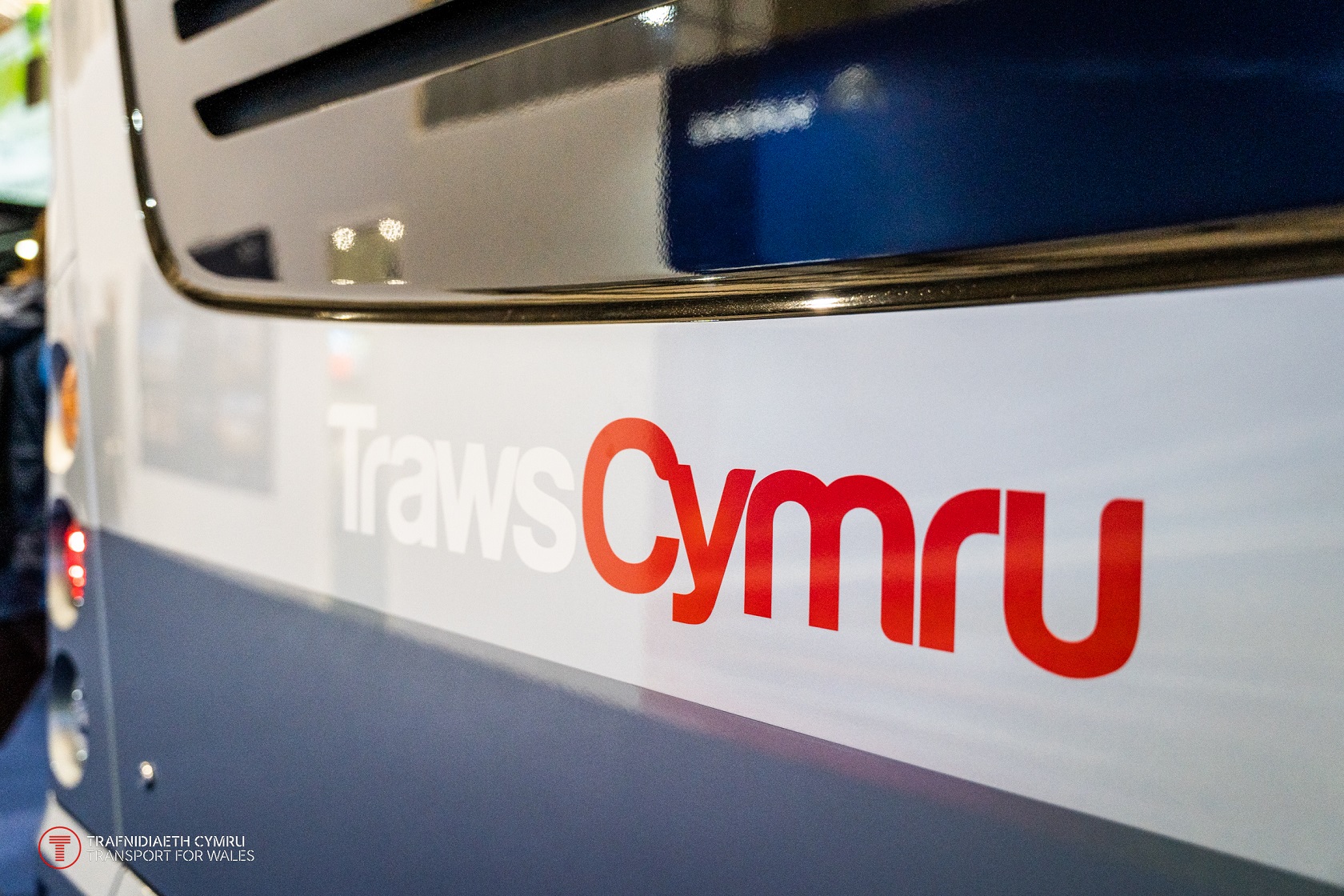Two significant developments in autonomous bus operation in the UK occurred during early January. Stagecoach East Scotland carried the first passengers on the CAVForth project, and First Bus previewed what it says is the UK’s debut zero-emission autonomous bus service at Milton Park in Oxfordshire (pictured, above).
Mellor Orion E showcases First Bus autonomous work
In the latter project, an autonomous Mellor Orion E battery-electric minibus hosted Under-Secretary of State for Transport Richard Holden as trials on public roads commenced on 23 January. Also part of the work is an autonomous battery-electric Switch Mobility Metrocity.
The circular service within Milton Park operated by the Orion E will launch to the public shortly, subject to regulatory approvals. The Metrocity will be used on a route to Didcot Parkway railway station “later in the spring,” a First Bus spokesperson says.
Autonomous buses at Milton Park part of the Mi-Link green travel programme. The former project has received £3m towards its £4.3m cost from the government’s Centre for Connected and Autonomous Vehicles through Innovate UK. First Bus says that the Milton Park scheme has “been established to demonstrate the application of autonomous vehicle technology to real-world service provision.”
Mr Holden joined representatives of consortium members, including First Bus Managing Director Janette Bell. Also part of the work are Fusion Processing, Oxfordshire County Council, University of the West of England (UWE) and Zipabout.

The autonomous buses will have what First Bus terms “a safety driver” aboard at all times. Fusion Processing has converted both to autonomous operation with its CAVStar sensor and control technology that utilises artificial intelligence.
Fusion CEO Jim Hutchinson says that CAVStar can be retrofitted “into any vehicle” to provide SAE International Level 4 autonomy.
CAVForth autonomous project progressing with Stagecoach
Meanwhile, Stagecoach East Scotland has carried the first passengers on the group’s CAVForth autonomous bus project. They were 22 members of the Co-Design Panel, who were then invited to offer feedback on the service ahead of its launch.
Stagecoach says that once registered and observing a frequent timetable, CAVForth will be able to carry around 10,000 passengers per week between Ferrytoll park-and-ride site in Fife and the Edinburgh Park transport interchange via the Forth Road Bridge. That public launch is expected in the spring, a slip from the previously-stated plans to go live in 2022.

The model type of the five buses used has now been formally named Enviro200AV by manufacturer Alexander Dennis.
When in use, the CAVForth examples will carry a “bus captain” to reassure passengers and assist with queries and the purchase of tickets.
The Co-Design Panel is made up of local bus users who have volunteered to help Stagecoach and its project partners to design how an autonomous bus service should work. They have been involved in livery design for the Enviro200AV fleet and in work on communications.
Passengers carried represents ‘major milestone’ for CAVForth
Stagecoach East Scotland Operations Director and CAVForth Lead Project Manager Louise Simpson says: “We are really excited to have reached this next major milestone in our project plan to deliver the UK’s first full-sized autonomous bus, which has seen us successfully carry a group of passengers on one of the new vehicles.
“Until today, only project team members had been able to try the autonomous service, so it is great that our Co-Design Panel has had this opportunity. We welcome any views that they have to ensure that we deliver a great, inclusive and accessible service to our customers when we launch in the spring.”
Other partners in the CAVForth project are Bristol Robotics Lab, Edinburgh Napier University, Fusion Processing, Transport Scotland and UWE.



























